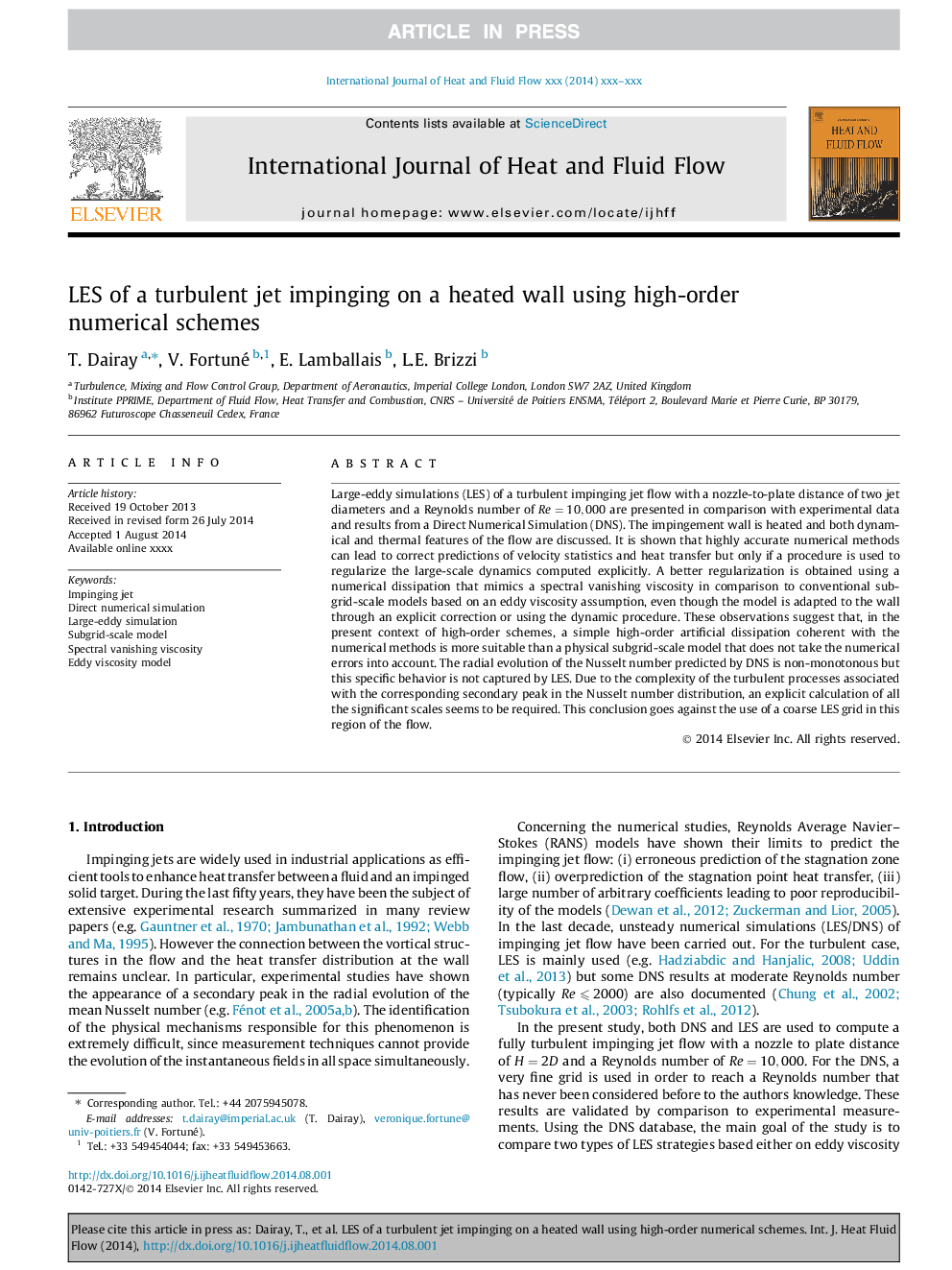| Article ID | Journal | Published Year | Pages | File Type |
|---|---|---|---|---|
| 7053618 | International Journal of Heat and Fluid Flow | 2014 | 11 Pages |
Abstract
Large-eddy simulations (LES) of a turbulent impinging jet flow with a nozzle-to-plate distance of two jet diameters and a Reynolds number of Re=10,000 are presented in comparison with experimental data and results from a Direct Numerical Simulation (DNS). The impingement wall is heated and both dynamical and thermal features of the flow are discussed. It is shown that highly accurate numerical methods can lead to correct predictions of velocity statistics and heat transfer but only if a procedure is used to regularize the large-scale dynamics computed explicitly. A better regularization is obtained using a numerical dissipation that mimics a spectral vanishing viscosity in comparison to conventional subgrid-scale models based on an eddy viscosity assumption, even though the model is adapted to the wall through an explicit correction or using the dynamic procedure. These observations suggest that, in the present context of high-order schemes, a simple high-order artificial dissipation coherent with the numerical methods is more suitable than a physical subgrid-scale model that does not take the numerical errors into account. The radial evolution of the Nusselt number predicted by DNS is non-monotonous but this specific behavior is not captured by LES. Due to the complexity of the turbulent processes associated with the corresponding secondary peak in the Nusselt number distribution, an explicit calculation of all the significant scales seems to be required. This conclusion goes against the use of a coarse LES grid in this region of the flow.
Keywords
Related Topics
Physical Sciences and Engineering
Chemical Engineering
Fluid Flow and Transfer Processes
Authors
T. Dairay, V. Fortuné, E. Lamballais, L.E. Brizzi,
